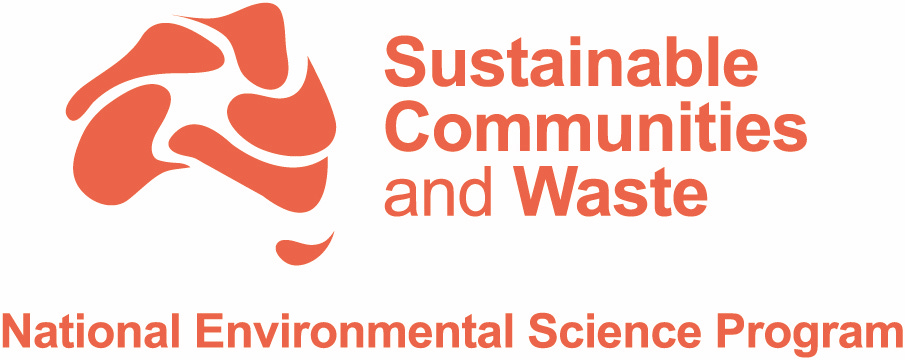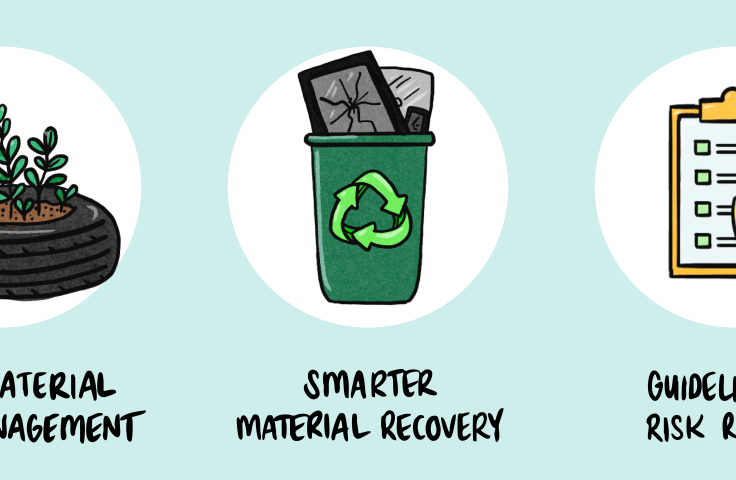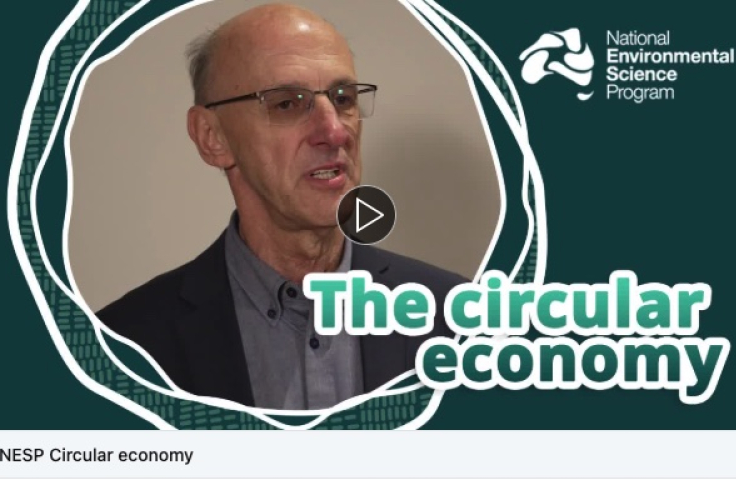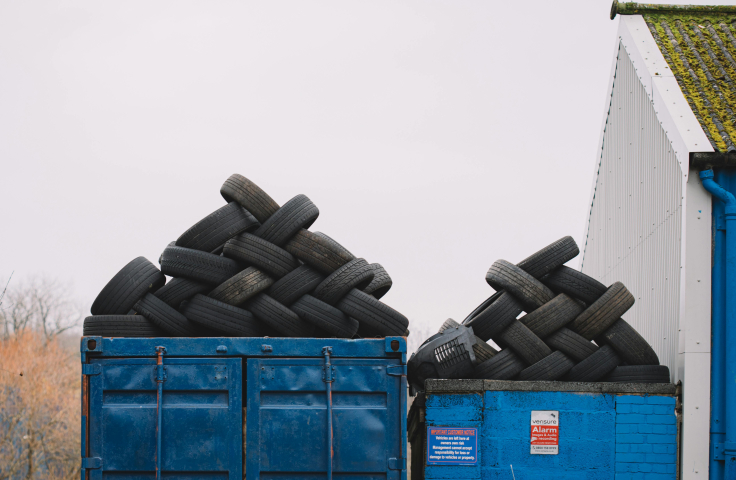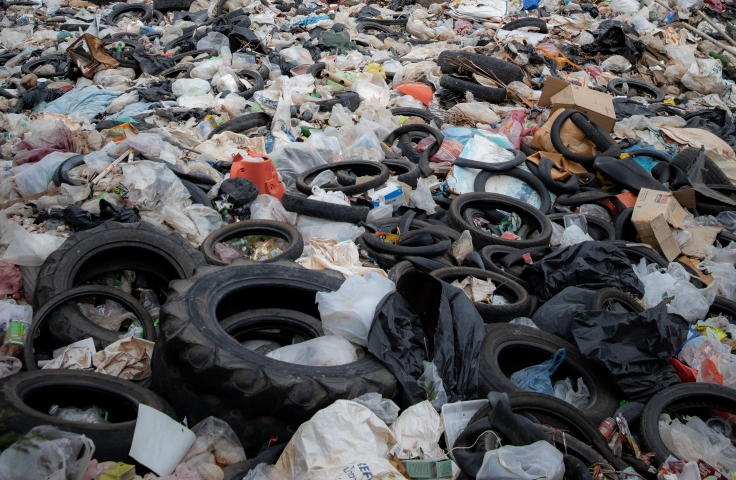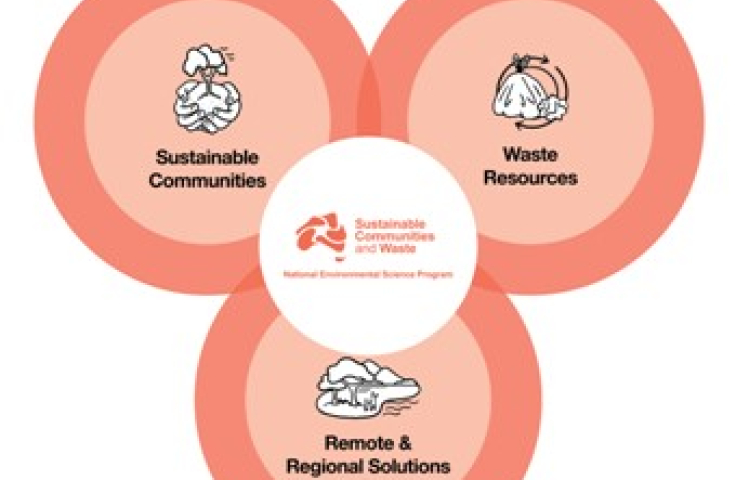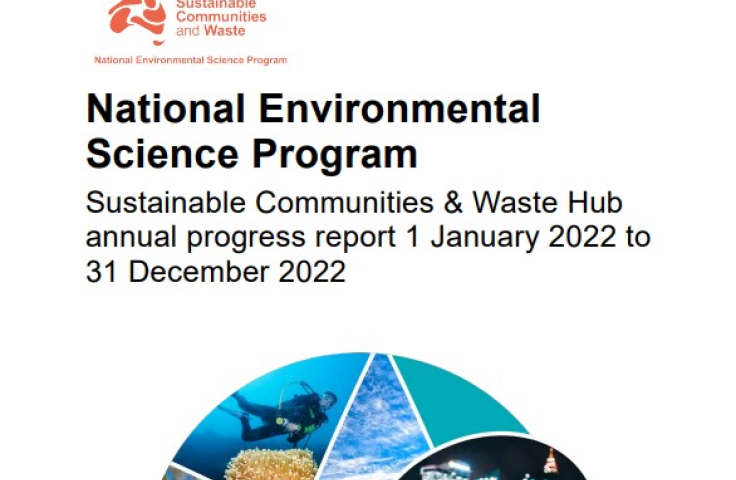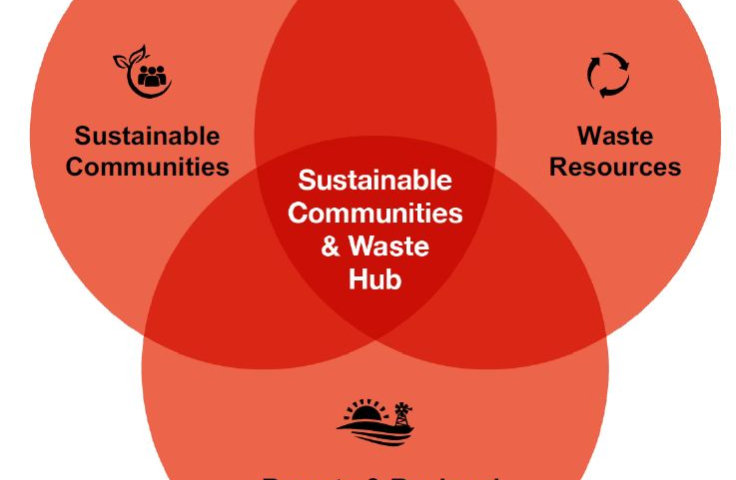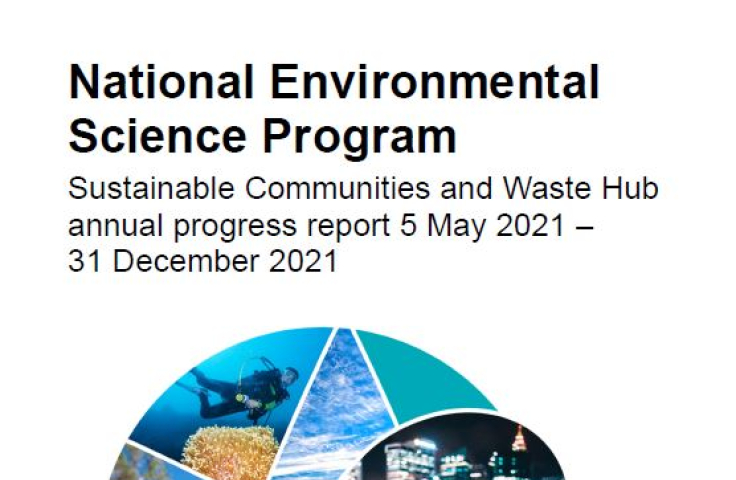Managing hazardous waste and pollutants is essential for protecting human health and the environment. Impact Priority 3 (IP3) is focused on improving the management of persistent and emerging contaminants in wastes and products with recycled content in Australia. Our research is co-designed to provide practical solutions for policymakers, industry and researchers to reduce risks and support effective regulation.
A multi-year research strategy was co-designed to advance our understanding of chemicals in wastes and their effects on the recovery and reuse of resources in circular economy initiatives.
- What’s in our waste: Understanding the chemicals in current and emerging waste streams and recovered resources.
- What’s the risk: Understanding the risk profile of chemicals in wastes and recovered resources.
- How to better inform stakeholders: Enhancing information flows and assessment for improved outcomes and governance for chemicals in wastes and recovered resources and their risks.
- Guidelines and frameworks: Development and adoption of nationally validated guidelines and method frameworks for the assessment of chemicals in waste and recovered resources and their risks.
Why?
Wastes, recovered resources and products with recycled content are chemically complex. With the growing interest in material recovery and reuse, there is a need to quantify the potential hazards that chemicals can pose to ensure safe waste reuse and circular economy aspirations.
A tiered approach to characterising and determining the fate and behaviour of chemicals in waste management and reuse of waste-derived materials is required. Data and information related to chemical identification, availability and effects on potentially sensitive environmental and biodiversity endpoints and receptors is crucial to advancing our transition towards safe waste reuse and circular economy.
Who?
Project leads:
- Dr Greg Davis, CSIRO
- Dr Naomi Boxall, CSIRO
Project team:
- Dr Mitzi Bolton, Monash University
- Dr Steve Fisher, CSIRO
- Dr Lisa Golding, CSIRO
- Dr Anu Kumar, CSIRO
- Professor Bob Wong, Monash University
- A/Prof Robert Niven, UNSW
- Prof Cynthia Joll, Curtin University
- Dr Anna Heitz, Curtin University
What?
Using identified priority waste materials, the research program is working to:
- Using priority waste materials identified through our co-design process, we have developed transferable guidelines, frameworks and methods to advance our understanding of chemicals associated with waste and recovered resources.
- Guidelines, frameworks and methods can assist stakeholders in designing relevant and robust sampling and chemical analysis campaigns.
- Sampling and analytical campaigns will generate high-quality and traceable data and information related to chemicals of potential concern in complex waste materials and products with recycled content, enabling appropriate risk mitigation and broader reuse uptake.
- End of life tyres, electronic and battery waste, and electronic cable sheathing materials produced from recycling are a focus as case study materials.
What’s happening?
The IP3 research program is currently in the last quarter of Research Plan 4. The project is focused on advancing our knowledge of the availability and potential environmental effects of chemicals contained in recycled rubber crumb and products with recycled rubber crumb content.
We are developing new methods to assess the availability and effects of chemicals under conditions that better reflect the application of materials with recycled content. For example, assessing the availability of chemicals in recycled rubber crumb that has been incorporated into products such as pavement and road base using passive leaching methodologies in conjunction with standard leaching tests (e.g., Australian Standard Leaching Protocol). Chemical effects from real solutions generated from passive leaching will be assessed using relevant Australian biodiversity and ecological endpoints and receptors.
Development and validation of new methods to assess the availability of chemicals under conditions and in environments relevant to how the materials will be reused is critical to enabling decision-making about chemicals in products with recycled content.
Projects are approved via whole of Hub annual research plans each year.
IP3 2023 research project from Research Plan 2023.
Factsheet - Overview: Advancing the safe management of chemicals in the circular economy (Aug 2025)
Factsheet - Building capacity to address gaps in chemical risk assessments (Aug 2025)
Factsheet - The path to waste chemical risk assessment (Aug 2025)
Factsheet - Method development for assessment of chemicals in complex waste materials (Aug 2025)
Factsheet - Co-designing research priorities for management of waste chemicals (Aug 2025)
Factsheet - Guidance on sampling complex waste materials (Oct 2023)
Report - Guidance on sampling complex waste materials (June 2025)
